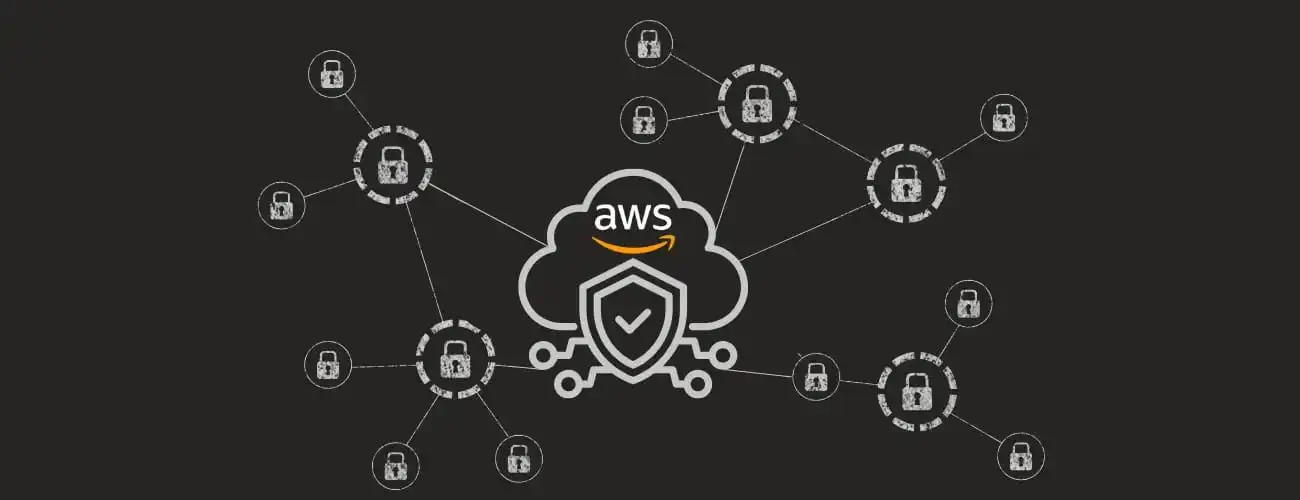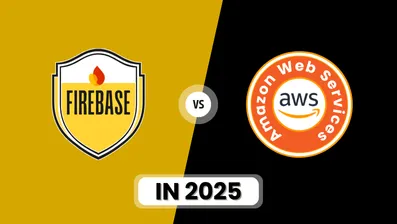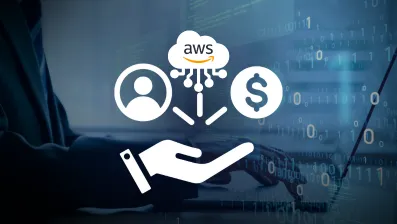Cloud adoption is no longer a trend- it's the default.
With AWS leading the charge, millions of businesses rely on it to power critical operations, store sensitive data, and scale globally.
But with great infrastructure comes even greater responsibility. The evolving threat landscape makes it clear: strong AWS security is not optional-it's business-critical.
From misconfigured buckets to ransomware attacks, cloud environments are attractive targets.
That’s why implementing the best practices for AWS cloud security is a must in 2025- not just to comply with standards but to build resilience, trust, and long-term scalability.
What is AWS Security?
AWS security encompasses a set of practices, tools, and services designed to protect your data, applications, and infrastructure within the AWS cloud. It operates on the Shared Responsibility Model, where AWS manages the security of the cloud infrastructure, and customers are responsible for securing their data and applications within that infrastructure.
► Key Components of AWS Security
- Identity and Access Management (IAM): Controls who can access your AWS resources and what actions they can perform.
- Network Security: Involves configuring Virtual Private Clouds (VPCs), security groups, and network access control lists (ACLs) to control traffic flow.
- Data Protection: Ensures data is encrypted at rest and in transit and implements backup and recovery strategies.
- Monitoring and Logging: Utilizes tools like AWS CloudTrail and CloudWatch to monitor activity and maintain logs for auditing purposes.
- Incident Response: Prepares for potential security incidents with predefined response plans and automated remediation processes.
Understanding these components is crucial for implementing effective security measures in your AWS environment.
Implementing these security components often requires skilled professionals. Understanding the cost to hire AWS developers can help the budget for building a secure and compliant cloud environment.
Importance of a Strong AWS Security Strategy
In 2025, your AWS cloud strategy needs more than uptime- it needs airtight security. With evolving threats and tighter compliance demands, a strong cloud security foundation is your secret weapon for resilience, scalability, and customer trust. Security isn’t just protection- it’s power.
1. Reduce Risk Before It Starts
A solid strategy helps you identify vulnerabilities early, reducing the chance of breaches or attacks. By applying best practices for AWS cloud security, you proactively lock doors before threats knock.
No more firefighting security issues during product launches- you're always one step ahead. Remember, prevention is cheaper than damage control, especially when it comes to AWS cloud security best practices.
2. Stay Cool with Compliance
From HIPAA to GDPR, industry regulations are more demanding than ever. A strong AWS security plan keeps your infrastructure audit-ready and stress-free.
Implementing robust AWS cloud security controls ensures you're meeting global standards without scrambling when the auditors come calling. Compliance isn’t scary when you’ve got the right controls baked into every environment.
3. Build Trust Like a Boss
Customers don’t want to “hope” their data is safe- they want to know it. Using strong cloud security practices across your stack shows users and partners you’re serious about protection. This trust becomes a competitive edge.
Every encryption policy or IAM review tells your customers: “We’ve got you covered.” It’s confidence you can sell and scale.
4. Secure Scalability
As your business grows, your infrastructure must scale- but so must your security. A smart AWS plan means strong AWS security grows with you, avoiding rework and surprises. Whether launching in new regions or onboarding remote teams, security stays seamless.
Best practices for AWS cloud security support speed without sacrificing protection, giving your teams the freedom to move fast and stay safe.
5. Save Money on Fixes
Breaches are expensive. So are rushed patches, emergency teams, and downtime. Investing in AWS cloud security best practices now saves your future self a fortune.
Automating security tasks, like patching or access control, reduces manual effort and human error. Bonus? It also keeps your DevOps team sane and your CFO happy.
6. Operational Continuity FTW
Want less downtime and fewer “urgent alerts”? A strong cloud security approach means fewer system failures and better uptime.
It keeps your services humming, even under attack. Designing for disaster recovery and automating response plans are part of key AWS cloud security best practices that ensure your business runs smoothly, no matter what.
7. Proactive, Not Reactive
The best security doesn’t wait for problems; it predicts them. A well-designed strategy includes threat modeling, anomaly detection, and smart alerts.
You’re not reacting to security breaches- you’re preventing them. With the best security practice in AWS in place, your team spends less time worrying and more time building awesome things. That’s what secure innovation looks like.
Common AWS Security Threats to Watch Out For in 2025
Cyber threats evolve as fast as the tools used to fight them.
Even the most sophisticated AWS setups are vulnerable to simple human errors, misconfigurations, and overlooked policies.
Many real-world breaches stem not from advanced hackers but from avoidable mistakes.
Understanding the security challenges currently faced by the AWS cloud helps prevent your business from making tomorrow’s headlines for the wrong reasons.
1] Misconfigurations and Access Issues
Misconfigured S3 buckets, overly permissive security groups, or open ports- these are among the top culprits of cloud breaches.
A bucket left public can lead to massive data exposure. Add an IAM role with excessive privileges, and you've got a high-risk combo.
Regular audits, automated compliance checks, and tight resource policies are key. Avoiding misconfigurations is not just good hygiene- it’s a best security practice in AWS that protects everything else.
2] Outdated or Overlooked IAM Policies
IAM policies often go stale as team members change roles or projects evolve. Former employees may retain lingering access, or permissions may stay too broad for convenience’s sake.
These gaps in access control make attractive entry points for attackers. Regularly reviewing and revoking outdated permissions is the best practice for AWS cloud security.
Use IAM Access Analyzer to uncover overexposure and reinforce the importance of strong AWS cloud security.
3] Real-World Breach Examples
Security headlines aren’t just scare tactics- they’re warning signs. In 2024, a fintech company exposed millions of records due to credentials hardcoded into a public repo.
A SaaS firm lost access logs after failing to rotate IAM keys. These cases weren’t caused by zero-day exploits but by ignoring cloud security best practices that AWS provides out of the box.
A good secrets manager, proper alerting, and auto-rotation can prevent these all-too-common missteps.
4] Poor Secrets Management
Storing secrets- like API keys, passwords, or tokens- in environment variables, plaintext logs, or Git commits is a recipe for disaster.
It's shockingly common and easily avoidable. Leaked secrets can give attackers admin access in seconds. Use AWS Secrets Manager or Parameter Store to securely store and rotate credentials.
Treating secrets with the same care as production data is an important AWS security best practice that’s often skipped but always regretted.
5] Ignoring Monitoring and Logging
You can’t protect what you can’t see. Without active monitoring via CloudTrail, GuardDuty, or Security Hub, suspicious activities go unnoticed until damage is done.
Logging gaps make incident response harder, delay audits, and create blind spots. Ensuring centralized logging, alert automation, and regular review of suspicious activity is part of robust AWS cloud security.
Visibility isn't optional. It's how you spot trouble before it becomes a tragedy.
6] Neglecting Software Updates and Patch Management
Vulnerabilities in unpatched EC2 instances, Lambda layers, or container images open doors for attackers.
Many teams delay updates due to fear of downtime, but skipping patches leaves you exposed. Use AWS Systems Manager to automate patch deployment and receive alerts for known vulnerabilities.
Treating patching as a continuous process is a key AWS cloud security best practice- one that directly impacts the importance of strong AWS cloud security posture.
Top 10 AWS Security Best Practices
Securing your AWS infrastructure goes beyond simple setup- it requires strategy, continuous monitoring, and automation.
By following these AWS cloud security best practices, you can build a defense-in-depth strategy that protects your applications, data, and teams while scaling with your business.
1. Use IAM Roles & Least Privilege Access
Access control isn’t about restrictions- It’s about reducing risk while maintaining functionality. Assign the least amount of privilege required to complete a task. Using IAM roles and permissions properly is a core best practice for AWS cloud security and long-term security hygiene.
- Avoid using root or full-admin access except when absolutely necessary.
- Assign IAM roles to services like EC2 or Lambda instead of embedding credentials.
- Use IAM groups instead of individual users for permission consistency.
- This strong AWS security tactic reduces your attack surface drastically.
2. Enable MFA & Lock Down Root Access
Your AWS root account holds the keys to your entire cloud kingdom. Locking it down and enabling MFA (Multi-Factor Authentication) across all accounts is a simple, high-impact step. It’s one of the most important AWS security best practices available.
- Enable MFA on the root account and all IAM users immediately.
- Create separate admin users- never use the root account for daily tasks.
- Enforce strong passwords with regular rotation.
- Configure session timeouts for added security during inactivity.
3. Harden Network Security with VPC & NACLs
Your network is the first layer of defense. Configuring VPCs, NACLs, and Security Groups wisely ensures your workloads are isolated, access is restricted, and traffic is monitored. These tools are central to any robust AWS cloud security framework.
- Segment environments into public and private subnets using VPC design best practices.
- Use Network ACLs to block unwanted IPs and define safe ranges.
- Restrict outbound internet access from sensitive workloads.
- Enable VPC Flow Logs to track and analyze traffic patterns.
4. Enable Logging & Continuous Monitoring
Without visibility, you can’t detect or prevent breaches. Logging everything and continuously monitoring behavior allows you to detect issues before they escalate. These practices are key to maintaining strong cloud security and achieving audit readiness.
- Enable CloudTrail across all AWS regions to track API activity.
- Use AWS Config to detect non-compliant resource configurations in real time.
- Monitor account activity and anomalies with AWS GuardDuty.
- Centralize logs using CloudWatch Logs and set up alerts.
5. Encrypt Everything – At Rest & In Transit
Encryption is your last line of defense. Even if data is accessed, strong encryption ensures it remains unreadable. Applying this to both stored and transmitted data is a must-have best practice for AWS cloud security.
- Enable server-side encryption for S3, EBS, RDS, Redshift, and DynamoDB.
- Use AWS KMS for managing and rotating encryption keys securely.
- Apply TLS 1.2 or higher for data in transit, especially on APIs.
- Enforce HTTPS on all endpoints, using ACM for managing SSL certs.
6. Automate Patch Management
Unpatched systems are among the most exploited weaknesses. Automating your patching process keeps your systems secure without disrupting your workflows. This is an important AWS security best practice that pays off in both protection and productivity.
- Use AWS Systems Manager Patch Manager to automate EC2 patching.
- Keep custom AMIs updated and remove outdated ones.
- Set up patch baselines for OS types and critical CVEs.
- Use Inspector to detect and prioritize unpatched vulnerabilities.
7. Regularly Audit Your AWS Infrastructure
Security isn’t set-it-and-forget-it. Cloud environments change constantly-new instances, new users, forgotten permissions. Conducting regular audits ensures you catch risks early. This is a key AWS cloud security best practice that helps you maintain control as your stack grows.
- Use AWS Config Rules to evaluate resource configurations and detect noncompliance automatically.
- Employ Security Hub to collect, aggregate, and prioritize alerts across services.
- Scan for vulnerabilities using Amazon Inspector and address them based on severity.
- Audit IAM policies and usage reports monthly to ensure roles follow the least privilege.
8. Secure Your CI/CD Pipelines
DevOps should be fast- but never careless. Secure CI/CD pipelines ensure you don’t push vulnerabilities along with your code. It's a vital part of building a robust AWS cloud security culture across your engineering teams.
- Store secrets in AWS Secrets Manager or Parameter Store, not in your repo.
- Use signed container images and verify sources with Amazon ECR image scanning.
- Integrate security checks into pipelines using tools like CodeGuru Reviewer.
- Automate deployment rollbacks when critical vulnerabilities are detected.
9. Use Multi-Account Architecture
Running everything in one AWS account is a recipe for confusion and increased blast radius. A multi-account strategy offers better control, isolation, and auditing, which supports strong AWS security and scalability.
- Separate environments (prod, dev, test) into individual AWS accounts.
- Use AWS Organizations to centrally manage accounts and apply Service Control Policies (SCPs).
- Assign limited roles per account to reduce accidental changes.
- Use AWS Control Tower for account provisioning and guardrails.
10. Backup and Disaster Recovery
Even with perfect security, things can go wrong. Backups ensure your business can recover quickly from data loss, attacks, or outages. It’s not just a backup plan- it’s a best security practice in AWS that saves businesses.
- Automate backups for S3, RDS, EC2, and DynamoDB using AWS Backup.
- Store backups in separate AWS regions or accounts to avoid cross-impact.
- Test restoration processes regularly; backups are useless if you can't restore them.
- Use lifecycle policies to manage storage costs without compromising safety.
How to Secure Your AWS Environment with DotStark?
Securing your AWS environment is critical to maintaining business continuity and protecting sensitive data.
As a trusted AWS development company, DotStark specializes in offering customized security solutions to safeguard your cloud infrastructure.
From configuring IAM roles to ensuring data encryption and compliance, DotStark ensures your AWS environment is secure and optimized.
With a strong focus on proactive threat detection, continuous monitoring, and tailored security practices, DotStark helps prevent unauthorized access and potential vulnerabilities.
By partnering with DotStark, you can confidently manage and scale your AWS environment while mitigating security risks. Let DotStark take your cloud security to the next level with expert solutions that keep your data safe and your infrastructure resilient.
Conclusion
As businesses increasingly rely on AWS for their cloud infrastructure, securing this environment becomes more critical than ever.
With evolving threats and sophisticated attack vectors, AWS security is not just about compliance but also about building trust, resilience, and long-term success.
By implementing AWS security best practices and leveraging tools like IAM roles, VPC configurations, encryption, and continuous monitoring, you ensure your cloud environment remains secure and scalable.
Partnering with an experienced top development company, such as DotStark, can further enhance your security posture.
With expert solutions tailored to your specific needs, DotStark helps you mitigate risks, manage compliance, and safeguard your sensitive data.
In a rapidly changing digital landscape, robust AWS security isn't just a necessity—it's the key to business continuity and customer trust.
Frequently Asked Questions
AWS security encompasses Identity and Access Management (IAM), network security, data protection, monitoring and logging, and incident response. Together, these components form a comprehensive security strategy for AWS environments.
IAM controls who can access your AWS resources and what actions they can perform. Implementing least privilege access with IAM roles helps limit exposure and reduce the attack surface of your AWS environment.
DotStark, as an AWS development company, provides customized security solutions, including IAM role configurations, data encryption, compliance management, proactive threat detection, and continuous monitoring to ensure the safety and optimization of your AWS infrastructure.
Common threats include misconfigured S3 buckets, outdated IAM policies, poor secrets management, lack of monitoring, and unpatched software. These vulnerabilities can lead to data breaches, loss of control, or compliance violations if not addressed.
Key best practices include using IAM roles with least privilege access, enabling multi-factor authentication (MFA), configuring VPCs for network isolation, monitoring activity with CloudTrail, encrypting data at rest and in transit, automating patch management, and conducting regular security audits.








 +91 9680599916
+91 9680599916
 vanshika@dotstark.com
vanshika@dotstark.com
